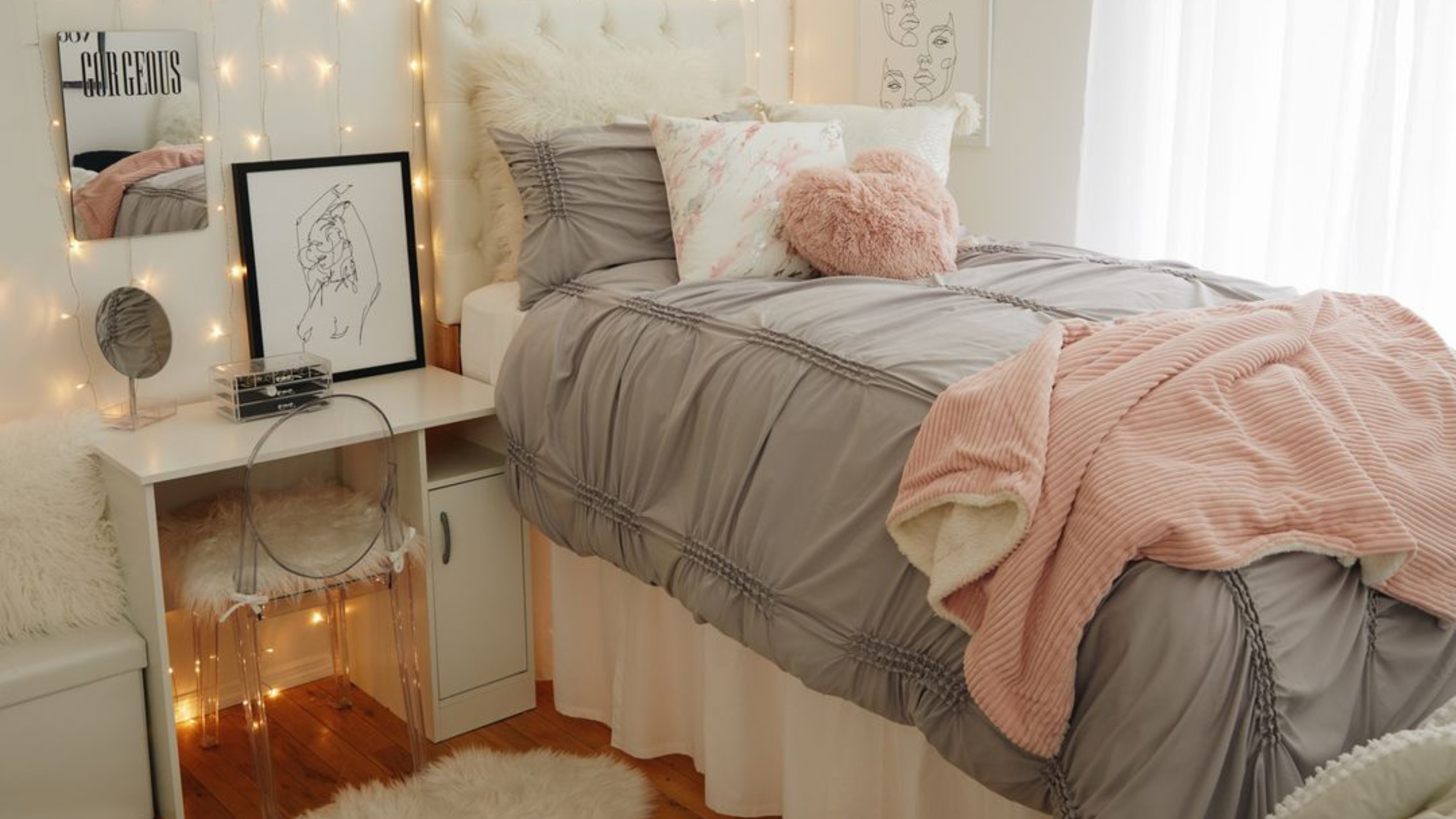

Setting up your first apartment? Congrats bestie! This is a super exciting time but buying furniture can be a time-consuming and expensive process, and if you’ve never done so before, it can also feel quite intimidating. With so many options on where to shop, a wide range of price points, and a seemingly endless number of styles to choose from, what should be a fun experience can turn into a chaotic and overwhelming one.
Another obstacle that many people face when buying furniture is sticking to a budget. Furniture is certainly an investment, but if you’re strategic about when you purchase certain pieces then you can get more bang for your buck.
I talked to Catherine Hooper, interior designer and founder of iSpy Home Design, to source her expert tips on how to buy furniture. Whether you’re moving into a new home or you’re hoping to refresh part of your living space, this guidance will help you design the space of your dreams.
Start with the largest pieces
It can be stressful to start with a blank canvas but look at it as an opportunity to create your dream space. One common question you might ask yourself is “Where should I start?” To that, Hooper says it’s always best to begin with the largest pieces of furniture that you’ll need.
“For most homes, these pieces include a sofa/sectional, dining table, and bed,” Hooper explains. “The reason why I start with these is twofold: The style you choose for these pieces will really inform not just the overall design of the apartment, but also what other finishes and textures you might want to bring in that these pieces don’t offer.”
For example, if you have a linen sofa you may want to bring in leather or velvet for the armchairs. If your dining table is white oak, perhaps the chairs introduce some metals or an all-fabric look. Second, as the largest pieces they’re usually the ones you’re willing to spend the most on, and therefore can guide your budget as you purchase additional furniture.
Hooper finds that these are also pieces people are most likely to bring with them when they move, while smaller items like nightstands or dining chairs can be switched out more easily.
Avoid cheap materials
When trying to furnish a space on a budget, there are certain things you might feel you need to sacrifice. Quality shouldn’t be one of them. Affordable furniture is often made with cheap wood that won’t hold up over time. Hooper recommends avoiding these pieces at all costs.
“Furnishings made out of cheap wood are much more difficult to assemble, always look fake, and fall apart more quickly, so you end up replacing them anyway down the line,” she adds. “There are so many companies out there working with quality, eco-friendly wood materials, like Avocado, Article, Burrow, Floyd, that it’s much easier than it used to be to obtain well-made and long-lasting wood pieces without breaking the bank.”
If your budget doesn’t leave room for any real wood, opt for metal frames instead. IKEA and CB2 both have really sleek metal-framed beds that are super affordable. Hooper is a fan of the powder-coated metal trend that brings in some additional color to a space like the ones from West Elm and Anthropologie.
Additionally, if you love leather but aren’t fond of the price tag, another budget saver is vegan leather products that come at a way lower cost but still look quality.
Be choosy about fabrics and materials
When you’re strategic with the textures you bring into your home, it can really level up the overall design. Hooper says that the look of stone and marble pieces can instantly add a stylized, bespoke look to a space. Furniture made from those materials also hold up better to water rings and other common stains when compared to wood.
Another strong option is leather, which ages well over time and is a smart investment, according to Hooper.
For dining chairs, those with cane or woven seats are never a bad idea because they’re easy to wipe clean and have a timeless style.
Spend less on items that are trendy
It can be tempting to purchase of-the-moment pieces, but this is a mistake that many first-time furniture buyers fall victim to. Overall, Hooper recommends that people spend less on items that might be more trendy or transient. This often includes smaller pieces such as side tables and nightstands, especially if the larger pieces around them are of higher quality.
“Even dining chairs can be a space to save if you don’t go with fancy wood or upholstered pieces. Amazon and Wayfair sell a bunch of funky colorful plastic chairs in sets of four that are under $200,” Hooper explains. “They look really funky and are super easy to clean.”
Lastly, if there are items you have to buy that are specific to the apartment, such as a kitchen island or cart, that wouldn’t be necessary for your next home, there’s no need to spend a lot of money because it isn’t a long-term investment.
Spend more on large staples
As mentioned above, always spend more on the largest items going in your home, like sofas/sectionals, dining tables, and beds. Anything you’d move with you to another home is worth spending more on, and that includes pieces that you just can’t live without because you love them.
“So much of interior design is about functionality, but we can't overlook a really fabulous or timeless design that will live with you forever,” Hooper says.
Hooper also thinks that quality rugs are an important item to spend a little more on to get a specific look or durability. Cheap rugs suffer from a lot of shedding and fading, and never hold up to cleaning well.
Last but certainly not least, she adds that anything handmade by a local artisan is worth the splurge. “Whenever we can support craftsmanship at its finest, we should."
Don’t rush the process
One common mistake that Hooper sees people make when buying furniture? Rushing the process. News flash: There’s no need to purchase all the furniture you need right away.
“I don’t expect folks to live in an empty apartment, but I recommend starting with the absolute necessities and then living in the space a while before finalizing what else you might need,” Hooper says.
She notes that she often hears that clients feel rushed to get things, then once they lived in their home for a while they realized that some items weren’t necessary, or rather what they bought initially wasn’t as functional as they needed it to be.
There’s also something special about accumulating things as you come across them, whether that’s online, in a shop by your house, or at a local flea market. “A home is not created overnight, it takes time and patience to get exactly the look you’re going for.”
Join our newsletter
Get small space home decor ideas, celeb inspiration, DIY tips and more, straight to your inbox!

About me:
Kara Thompson is a Denver-based journalist with over five years of experience writing lifestyle content. She has written for a variety of publications, including townandcountrymag.com, elledecor.com, goodhousekeeping.com, and Parents, where she covered all things home, food, fashion, travel, and holidays. During her time on staff at Parents, Kara launched her own home decor and organization column named Save My Space. In 2022, she left her full-time job as an editor and started her own writing, editing, and social media firm, Kara Thompson and Co.
Tennis, New York City, bourbon cocktails, and her sister's German Shepherd are a few of her favorite things.